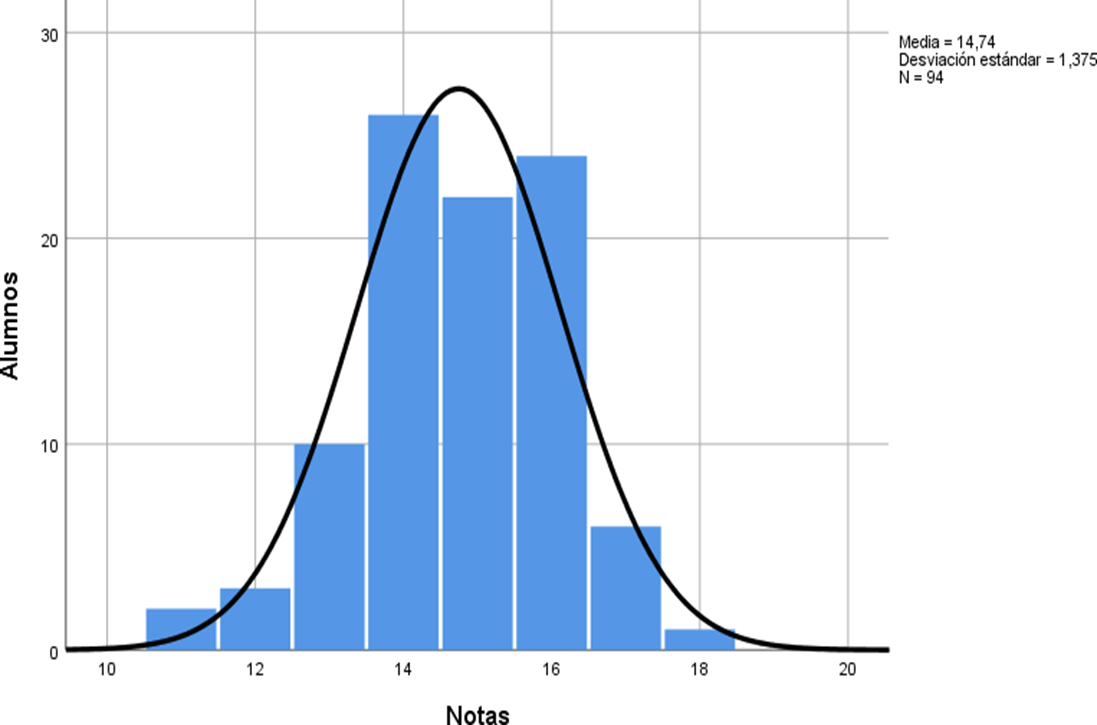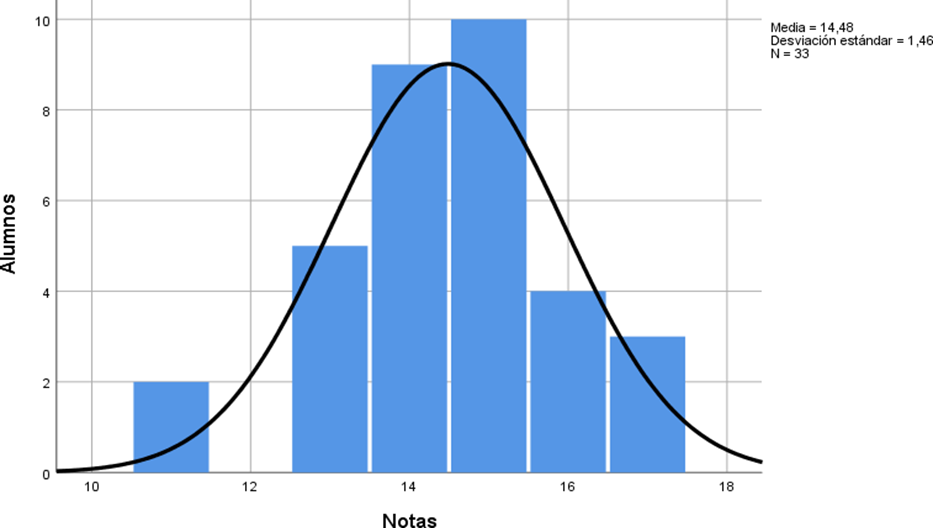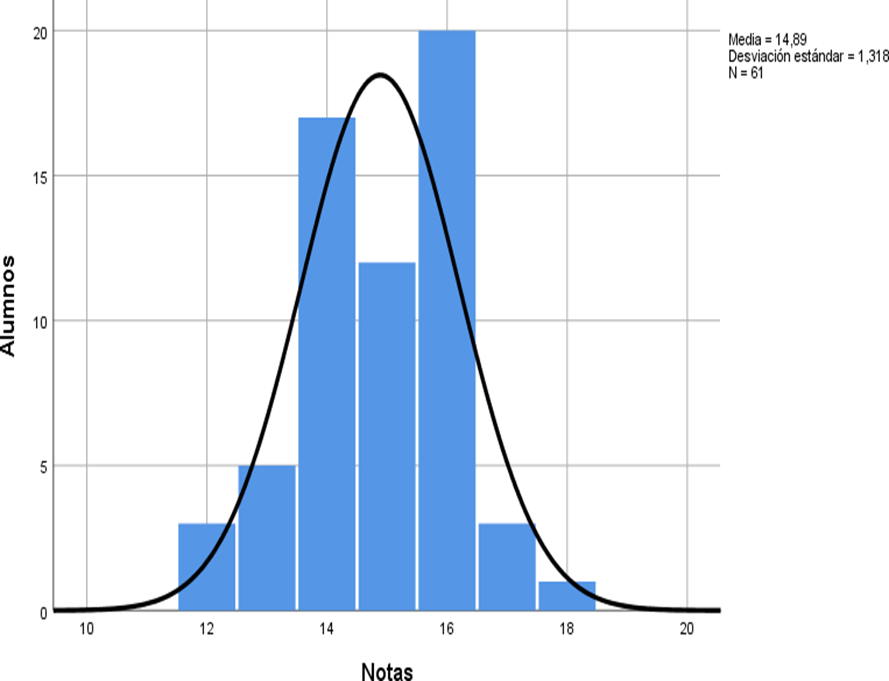ORIGINAL ARTICLE
REVISTA DE LA FACULTAD DE MEDICINA HUMANA 2023 - Universidad Ricardo Palma10.25176/RFMH.v23i2.5640
HEARING LEVEL AND ACADEMIC PERFORMANCE IN STUDENTS
OF AN EDUCATIONAL INSTITUTION IN LIMA
NIVEL AUDITIVO Y RENDIMIENTO ACADÉMICO EN ESTUDIANTES DE UNA INSTITUCIÓN EDUCATIVA DE LIMA
Félix Cordero-Pinedo
 1a,
Filomeno Jauregui
1a,
Filomeno Jauregui
 1b,
Leydy Cordero
1b,
Leydy Cordero
 1c
1c
1Universidad Nacional Federico Villarreal. Lima, Peru.
aMedical Surgeon.
bOtorhinolaryngologist.
cMedical Technologist.
ABSTRACT
Introduction: Hearing is the usual way to acquire language, which allows us the development of thought and knowledge; hearing loss can affect the ability to learn and communicate in children and cause alterations in their behavior and academic performance. Objective: To determine the relationship between hearing level and academic performance in primary school students from a public educational institution in Lima. Methods: Observational, correlational and cross-sectional study. Otoscopy and audiometry were performed in 94 students of the sixth year of primary school of the Santa Rosa de Lima educational institution, in Los Olivos-Lima. Was used the otoscope, the audiometer and the final grades of each student of the first academic semester 2022 as instruments. The relationship was analyzed using Spearman's Rho correlation coefficient. Results: 35.1% of students had mild hearing loss and 64.9% had normal hearing loss. The average academic performance of the sample was 14.74; the average academic performance of the normoacusic students, 14.89 and the average academic performance of the hearing impaired, 14.48. In the Spearman's Rho correlation análisis, it was found a positive correlation between hearing level and academic performance (0.200). Conclusions: There is a positive relationship between hearing level and academic performance in sixth grade students of the Santa Rosa de Lima- Los Olivos educational institution.
Keywords: Hearing loss, audiometry, hearing level, academic performance. (Source: MeSH-NLM)
RESUMEN
Introducción: La audición es la vía habitual para adquirir el lenguaje, lo cual permite el desarrollo del pensamiento y el conocimiento; la pérdida auditiva puede afectar la capacidad de aprendizaje y comunicación en el niño y ocasionar alteraciones en su comportamiento y rendimiento académico. Objetivo: Determinar la relación entre el nivel auditivo y el rendimiento académico en estudiantes de educación primaria de una institución educativa pública de Lima. Métodos: Estudio observacional, correlacional y transversal. Se realizó otoscopía y audiometría en 94 alumnos del sexto año de primaria de la institución educativa Santa Rosa de Lima, en Los Olivos-Lima. Se usó como instrumento el otoscopio, el audiómetro y las notas finales de cada alumno del primer semestre académico 2022. Se analizó la relación mediante el coeficiente de correlación de Rho de Spearman. Resultados: El 35,1% de estudiantes presentaron hipoacusia leve y el 64.9%, normoacusia. El rendimiento académico promedio de la muestra fue 14,74; el rendimiento académico promedio de los normoacúsicos; 14,89 y el de los hipoacúsicos, 14,48. En el análisis de correlación de Rho de Spearman, se encontró correlación positiva entre nivel de audición y rendimiento académico (0,200). Conclusiones: Existe relación positiva entre el nivel de audición y rendimiento académico en estudiantes del sexto año de primaria de la institución educativa Santa Rosa de Lima en Los Olivos.
Palabras clave: Hipoacusia, audiometría, nivel auditivo, rendimiento académico. (Fuente: DeCS–BIREME)
INTRODUCTION
Hearing is the usual pathway for language acquisition, enabling the development of thinking and
knowledge. Hearing loss or hearing impairment in children can affect
their learning and communication abilities and lead to disruptions in behavior and academic performance
(1-5).
Normal hearing in children influences speech and language development, which is an important condition
for successful teaching and learning in school-age children
(6).
Generally, children with hearing loss or auditory deficits, known as hearing impairment or hypoacusis,
may exhibit hyperactivity, distractibility, and difficulties
in the optimal learning process. Therefore, it is important to rule out hearing loss in students at the
beginning of the academic year to assess the magnitude and
severity of this issue, which could impact students' academic performance (7-9).
In our country, there are few studies on the influence of hearing loss on academic performance in
primary school students. A previous study conducted by Chumpitaz
et al. (10),
in primary school students from an educational institution in Tacna aimed to relate auditory level to
academic performance. The study included 67 primary school
students, with 44.8% having normal hearing, 37.3% having mild hearing impairments, and a school
performance of 64%. Additionally, 17.9% had moderate to severe hearing
loss, with a performance of 8.3%. This study revealed a relationship between auditory level and academic
performance.
Internationally, Cardemil et al. (11),
conducted a study in Chile with 196 schoolchildren and observed that 5.6% of the cases had mild hearing
loss in the right ear, while 4.52% had left-sided hearing loss,
all of them of a conductive nature. The determining factors for hearing loss were serous otitis media,
impacted earwax, and chronic otitis media. They concluded that
conductive hearing loss often occurs during the school-age years, and they recommend implementing
hearing screening programs for school-age students.
Del Río et al. (12)
conducted a study in Mexico on hearing loss in 364 schoolchildren and found 86 students with hearing
loss, representing 23.6% of the cases. It was concluded that audiometry
should be recommended as a hearing loss screening procedure in the pediatric population.
Santana et al. (13),
conducted research in the Dominican Republic on the relationship between hearing impairment and academic
performance in a student population. They found that 12% had mild
hearing loss. When comparing the academic performance of students with hearing loss to those with normal
hearing, they found a higher proportion of hearing-impaired students
with grades below the average academic performance. The conclusion was that hearing impairment can
significantly impact average academic performance.
The main objective of this research was to determine the relationship between auditory level and
academic performance in primary school students from a public educational
institution in Lima.
Furthermore, this study is important as it helps establish whether hearing loss influences the academic
performance of students in a public primary school.
METHOD
Design and Study Area
The study design is prospective, observational, correlational, and cross-sectional, conducted in a public primary educational institution.
Population and Sample
The population consisted of 123 sixth-grade students from N° 2006 Santa Rosa de Lima public school in Los Olivos - Lima. The sample size was calculated using the formula for finite population with a 95% confidence level and 5% significance level, resulting in a sample of 94 students who were present during the scheduled days for interviews, otoscopy, and audiometric exams.
| n = | Z2Npq |
| e2(N - 1) + Z2pq |
Where:
N = Population size
Z = Value from the standardized normal distribution curve with a 95% confidence level, 1.96
p = Proportion of the probability of the variable under study, 50% (0.50)
E = Allowable error in sample calculation, 5% (0.05)
| n = | (1.96)2(123)(0.5)(0.5) |
| (0.05)2(123-1) + (196)2(0.5)(0.5) | |
| n=94 students |
Variables and Instrument
The dependent variable was academic performance (AP), which measures the student's capacity and the
evidence of what has been learned within the educational process.
It is also defined as the achievement of goals and objectives set in the educational program. Factors
such as effort, study skills, competencies, aptitude, personality,
attention, memory, environment, psychological, and emotional factors influence academic performance
(14,15).
The independent variable was the level of hearing. The World Health Organization (16)
states that hearing is the means through which spoken language is acquired, representing an important
human attribute and a communication channel with different cultures.
It is important to consider that hearing impairments can influence academic performance, leading to
learning delays in the classroom, difficulty in abstracting concepts,
verbal activities, decreased attention, delayed completion of scheduled activities, difficulty following
instructions, and comprehension (17-20).
Regarding the instruments used for data collection, a questionnaire survey technique was employed. An
otoscopy examination was conducted to observe possible abnormalities
such as cerumen impaction and foreign bodies. Pure-tone audiometry examination was performed using the
Interacoustics AD229 audiometer to measure the hearing levels of each
student. Interviews were conducted with classroom teachers to gather information on academic performance
and the average grades of each student during the first semester of
the academic year 2022.
Procedure
With prior authorization and permission from the authorities of the educational institution, and with signed consent and informed assent, data collection was carried out, including academic performance information, otoscopy examinations, and audiometry tests for each of the students present on the scheduled dates.
Statistical Analysis
The obtained results were observed, analyzed, and tabulated using statistical analysis software, specifically SPSS version 26. Various statistical tests were applied based on the type of variable under study, and the data were presented using tables and figures. Inferential statistics were used, including the Spearman's rank correlation coefficient (Rho), to measure the degree of correlation between the two variables.
Ethical Considerations
The study was approved by the Ethics Committee of the Faculty of Medicine at the Universidad Nacional Federico Villareal. Student participation was voluntary and based on the acceptance of informed consent and assent. Authorization was obtained from the authorities of the educational center, who provided the necessary infrastructure and logistical support for the researchers to carry out the different activities. Biosecurity measures were followed, and the obtained information was solely used for research purposes.
RESULTS
The present study evaluated 94 sixth-grade students from the public educational institution N° 2006
Santa Rosa de Lima. Otoscopy and pure-tone audiometry were conducted,
and the final averages for each student during the first semester of 2022 were obtained. Among the 94
students evaluated, it was found that 33 students had mild hearing
loss (35.1%), while 61 students had normal hearing (64.9%).
The academic performance of each student was determined by calculating the final average grade across
all subjects during the first semester of 2022. The average academic
performance for the 94 students was 14.74, with a range of 11 to 18 and a standard deviation of 1.375
(Figure 1).
The average school performance in students with hearing loss is 14.48 (n=33), with a standard deviation of 1.460 (Figure 2).
The average school performance in students with normal hearing is 14.89 (n=61), with a standard deviation of 1.318 (Figure 3).
When comparing the academic performance of students with hearing loss to the rest of the students, it was found that the students with hearing loss had an average of 14.4, which is lower than the overall average academic performance: 14.74. Regarding the academic performance of students with normal hearing compared to the rest of the students, it was found that the normal-hearing students had an average of 14.89, which is higher than the overall average academic performance: 14.74. When conducting inferential analysis using the Spearman's rank correlation coefficient (Rho), a positive correlation of 0.200 (Table 1) was found between the levels of hearing and academic performance of the students.
Table 1. Correlation of Variables.
|
Hearing Level |
Academic Performance |
||
|---|---|---|---|
|
Hearing level |
Spearman’s Rho Correlation |
1.000 |
0.200 |
|
|
Sig. (two-tailed) |
|
0.179 |
|
|
N |
0.94 |
0.94 |
|
Academic performance |
Spearman’s Correlation |
0.200 |
1.000 |
|
|
Sig. (two-tailed) |
0.179 |
|
|
|
N |
0.94 |
0.94 |
DISCUSSION
Out of the 94 students evaluated, 33 students (35.1%) had mild hearing loss, which is consistent with
other studies conducted on school children, such as the study by
Chumpitaz et al. (10), who found a 34% prevalence of the same condition
The average academic performance of the 94 students was 14.74, with a range of 11 to 18 and a standard
deviation of 1.375. This aligns with the findings of Santana et al.
(13), who reported an average of 76.8, equivalent to 15.36.
The average academic performance in students with hearing loss is 14.48 (n=33), with a standard
deviation of 1.460, which is lower than the overall average of the 94 cases
evaluated. This is consistent with the study by Santana et al. (13),
who found a significantly higher proportion of students with hearing loss obtaining lower grades.
The average academic performance in students with normal hearing is 14.89 (n=61), with a standard
deviation of 1.318. When comparing this result, normal-hearing students
have an average of 14.89, which is higher than the overall average of 14.74. This aligns with the
research by Chumpitaz et al. (10),
where the majority or all of the children with normal hearing achieved satisfactory academic
performance.
The most common finding among the 33 students with mild hearing loss was the presence of cerumen
impaction in 28 cases, which coincides with the findings of Cardemil et al.
(11).
By analyzing the relationship between hearing levels and academic performance using the Spearman's rank
correlation coefficient (Rho), a positive correlation was determined
between both variables, similar to the findings of Chumpitaz et al. (10),
who found an association between the degree of hearing loss and academic performance.
CONCLUSIONS
There is a positive relationship between hearing level and academic performance among sixth-grade students at Santa Rosa de Lima public educational institution in Los Olivos-Lima. Therefore, it is recommended to conduct hearing screening at the beginning of the school year in educational centers and provide preventive promotional talks to the population for hearing care.
Authorship contribution statement:
FCP participated in conceptualization, investigation, methodology, resources, and drafting
of the original manuscript.
FJ participated in conceptualization, investigation, methodology, resources, and drafting of
the original manuscript.
LC participated in conceptualization, investigation, methodology, resources, and drafting of
the original manuscript.
Funding:
Self-funded.
Conflict of interest statement:
The authors declare no conflicts of interest.
Received:
March 3, 2023.
Approved:
May 24, 2023.
Correspondence:
Félix Cordero Pinedo.
Address:
Calle Tenerife 117 Urb. Mayorazgo, Ate, Lima-Peru.
Phone number:
(+51) 990 994 252
E-mail:
drfelixcordero@hotmail.com
Article published by the Journal of the faculty of Human Medicine of the Ricardo Palma University. It is an open access article, distributed under the terms of the Creatvie Commons license: Creative Commons Attribution 4.0 International, CC BY 4.0(https://creativecommons.org/licenses/by/1.0/), that allows non-commercial use, distribution and reproduction in any medium, provided that the original work is duly cited. For commercial use, please contact revista.medicina@urp.edu.pe.
BIBLIOGRAPHIC REFERENCES



